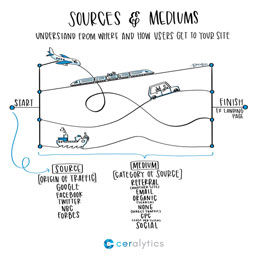Engaging content is still a challenge six years later
Is creating more engaging content your top priority this year as a marketer, but also your biggest challenge?
You aren’t alone.
Over 70% of all marketers surveyed identified creating more engaging content as their top priority in the sixth annual Content Marketing Benchmarks, Budgets, and Trends-North America report. (To be more specific 73% of B2C marketers, and 72% of B2B marketers). Producing engaging content was also noted as the biggest challenge (56% of B2C marketers and 60% of B2B marketers).
Unfortunately, this is isn’t news – engaging content was highlighted in all five of the previous surveys. The emphasis on delivering business results can lead us to push our product or service through content without us really understanding what our audience needs. This mentality distracts today’s marketer from starting with a solid content marketing foundation: building the right customer insights.
So, how do we build a roadmap for how to address that gap?
First, let’s recap how the experts define engaging content. Engaging content “grabs the audience’s attention and compels them to want to read more” (Jodi Harris, 2016). In order to do this, the experts have been telling us for years to create content that:
- Is relevant to your target audience
- Helps your target audience with an issue they have right now
- Is something your audience can’t find anywhere else
- Entertains, educates or both
- Tells a story that will resonate with your audience on an emotional level
- Invites the viewer to engage with you further by adding a call to action
Ultimately, I like the simplicity of Bojana Dobran’s definition: “Offer the information the user actually seeks.” Whether they are looking to be entertained, feel a connection or emotion, learn, solve a problem or answer a question they currently have – creating engaging content is simple: get to know as much as you can about your audience and give them what they are looking for.
This is the key to Jay Baer’s philosophy for content marketers – which he calls “Youtility”. Jay tells us that we must strive to create content that is “so helpful someone would pay for it.”
Simple right?
The problem is we aren’t doing it…
A Forrester study revealed that most B2B marketers fail to engage their audience because, instead of speaking to the issues their target audiences are trying to solve, their content is busy touting their product or brand.
So, back to our question on how to close the engaging content gap…
Clearly, the place we need to start is truly knowing our audience. There are many ways to approach audience research, the gold standard of which is creating buyer personas.
Don’t roll your eyes! Building detailed customer insights via buyer personas may not be difficult to create – but, you are right, it is a time consuming process. And, most marketers today are already juggling multiple priorities that compete with creating buyer personas.
Given this, let’s apply a coaching technique for goal setting called AIM SMART that will help us get started and ensure we take on audience research that is attainable.
STEP 1: Start with identifying the bare minimum action you could take. This is the “A” in AIM for “Acceptable Minimum Goal”. For example, having a 30 min conversation with a salesperson or an actual customer (if you own the relationship or are free to speak directly).
STEP 2: Restate the ideal, which in this situation is “to gather data and build buyer personas”. This is our “I” in AIM for “Ideal Goal”.
STEP 3: Finally, reflect on what would be middle ground. This is the “M” in AIM for Middle Goal. I leave this step totally up to you. What is one action you could take to gather customer insights immediately that falls in between creating buyer personas and talking to a salesperson.
Now, take that “middle goal” and make it SMART by answering the following questions:
- What is a specific first step you will take?
- How will you measure your progress?
- Is it actually achievable? (yes/no)
- On a scale of 1 to 10, how reasonable is this goal (where 1=not at all reasonable, and 10=totally reasonable)? If you rated yourself lower than a 10, then ask yourself: What would need to change in order for you to be at a 10?
- How will you make the goal time-oriented? (set a deadline)
Utilizing this process, user personas will take shape – one small step at a time. Talking to Sales may result in a number of different personas that they see every day. Each customer you speak to will have their own needs and wants. Even a little research goes a long way. As you assemble the personas, you will notice overlapping needs and wants that can either be combined into individual user personas, or become key needs that your overall audience has.
Armed with the needs of your audience, you can now create content that directly addresses them. By solving their problem, you’re creating engaging content and establishing yourself as a trusted leader.
If we don’t start making content that truly meets our audiences’ needs, we’ll need to call the Monty Python – Bring out your dead wagon, to clean up the un-engaging content clutter.


